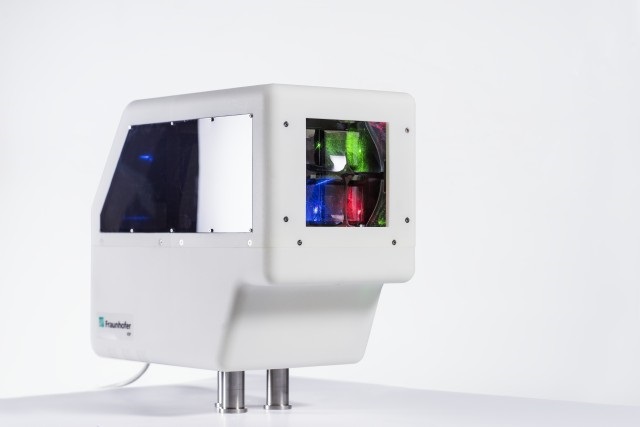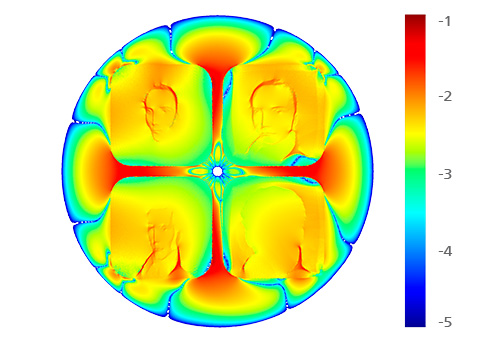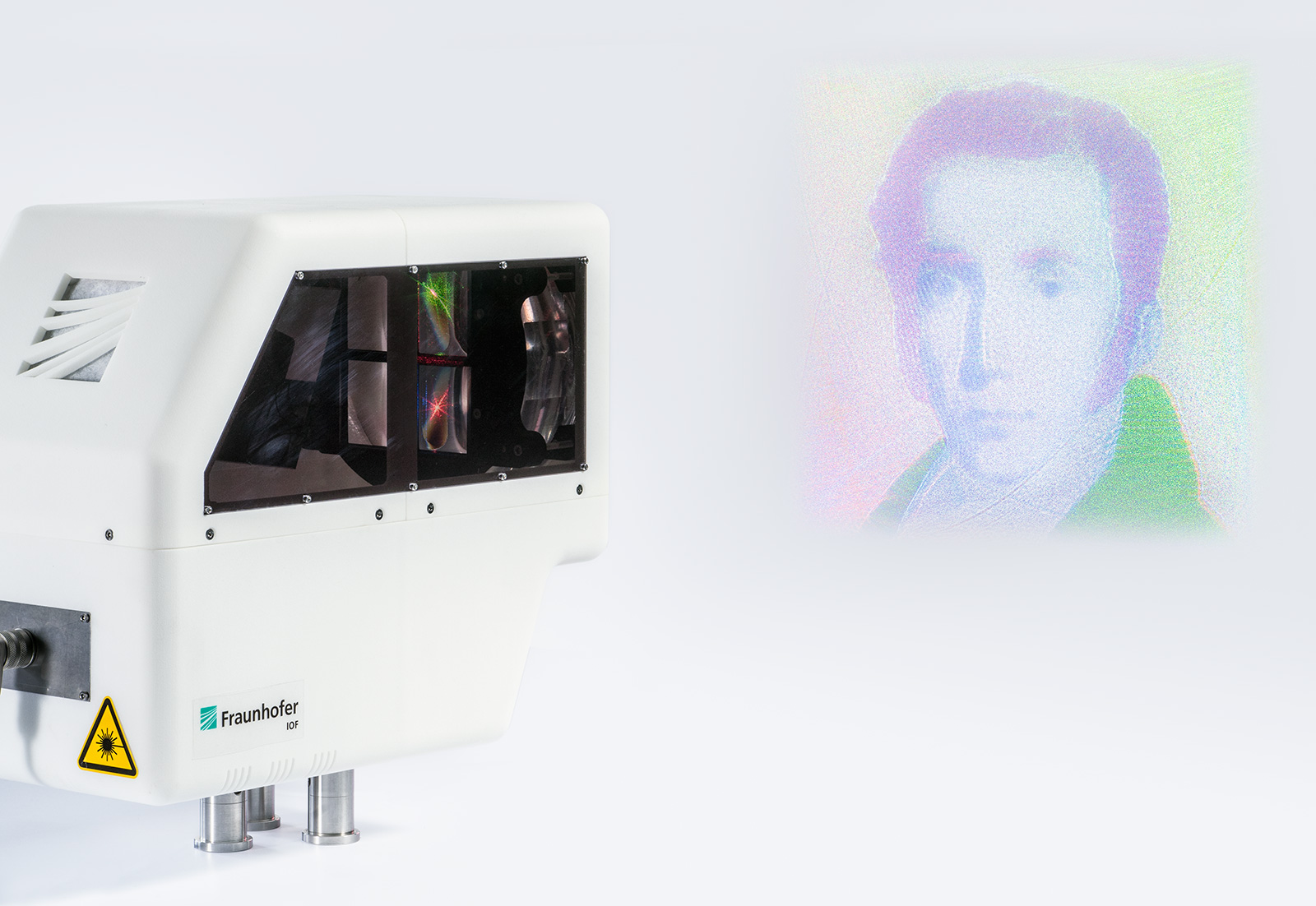

Beam shaping lenses have many applications from laser optics to illumination in architecture. It is possible to calculate beam shaping lenses even for complex image distributions. Ultra-precision (UP) manufacturing techniques further allow the production of fine freeform structures on large surfaces. Within the project KoSimO a projector with a freeform lens has been built, which overlays three RGB images to one color image. The motive is Joseph von Fraunhofer, after whom the Fraunhofer society was named. In addition, a fourth channel projects the complete image in a monochrome way. The heart of the demonstrator is a freeform lens made of PMMA with a diameter of 160 mm. This includes four segments on one substrate. Each segment forms its desired image distribution to be overlaid to an image of 300 mm width in a distance of 1 m. The color channels are automatically switched and combined in different manners to give a pop art impression. Opposite to the Gaussian laser profile, the aimed distribution is non-symmetric, which requires complex numerical algorithms for surface calculation. It also works with steep intensity gradients as well as with larger dynamics of grey values of the aimed image distribution. The calculation method is based on the energy balance as well as the law of refraction. It fulfils the demand of a continuous surface description, which simplifies the manufacturing and reduces diffraction effects. Further, in paraxial approximation, the design process for collimated incoming rays can be divided into two separate steps, which reduces the calculation effort. All freeform surfaces are manufactured on the same substrate in one step. This ensures the tolerance for a correct superposition of the three images in the projection plane. At the beginning, the non-symmetrical pre-shape of the lens is manufactured with a tolerance below 50 μm. However for optical application, a higher precision is necessary. Therefore the freeform surface is processed by an UP turning machine with a diamond tool in the next step. The acceleration of the machine toolpath is minimized by using a penalty functional. Within this optimization, gradients and sag values are controlled in accordance to the machine constraints. Further, the transition areas between the optical surfaces had to be filled with continuous values to prevent undesired vibrations and accelerations during the turning. In the development, the intermediate steps of the calculated surface descriptions have been investigated with raytracing simulations. These have also been used for the construction of the demonstrator as well as for the design of the collimation optics. In general Fraunhofer IOF offers expertise in the design and manufacturing of beam shaping freeforms as well as imaging freeform systems.
Authors: Britta Satzer, Christopf Bösel (Institut für Angewandte Physik, Friedrich-Schiller-Universität Jena), Robert Jende, Kevin Srokos, Johannes Hartung
